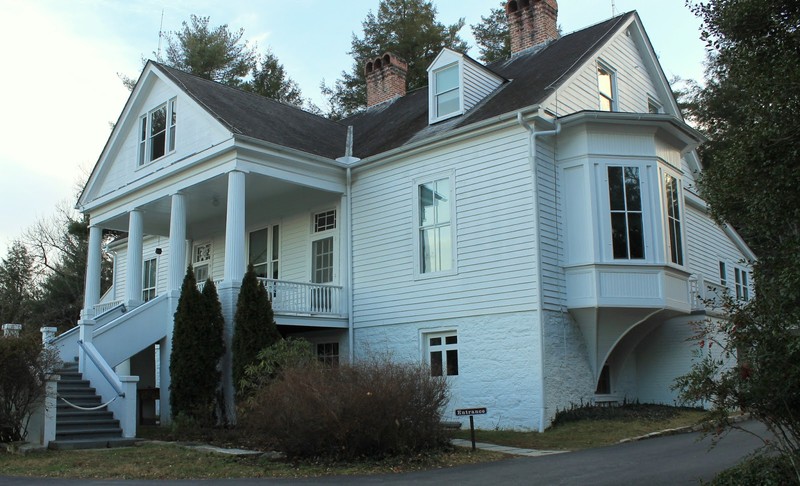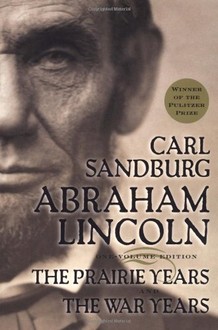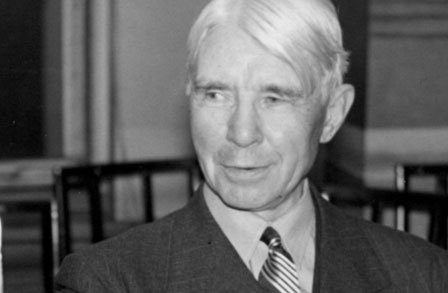Carl Sandburg Home
Introduction
Text-to-speech Audio
Images
When Sandbrg purchased the home, he remarked that he felt like he was buying a small village and a milion acres of sky.

Sandburg's biography of Abraham Lincoln is among his most famous works. You can learn more about this book by clicking on the link below.

Carl Sandburg

Backstory and Context
Text-to-speech Audio
Born in Galesburg Illinois in 1878, Carl Sandburg was the son of Swedish immigrants August and Clara Johnson. The Johnsons changed their family name to Sandburg to help themselves stand out more after encountering a number of other Johnsons while working on the railroad. Because his family was extremely poor, Carl Sandburg quit school when he turned thirteen and began working odd jobs to help support his family.
After traveling to Kansas without any money at the age of seventeen, Sandburg joined the army and served in Puerto Rice during the Spanish-American war. A fellow soldier convinced Sandburg to enroll in Lombard College in his hometown. While working his way through school, Sandburg's writing was greatly admired by Professor Philip Green Wright. Professor Wright pushed Sandburg to continue writing and paid for the publication of Reckless Ecstasy, Sandburg's first collection of poetry, in 1904. Though he attended the school for four years, Sandburg never received his official degree from Lombard. He would later receive an honorary degree from the college as well as from Knox College and Northwestern University.
When he left Lombard College, Sandburg relocated to Milwaukee and took jobs as an advertisement writer and reporter. During his time in the city, Sandburg married Lillian Steichen, the sister of the photographer Edward Steichen. Sandburg worked for Wisconsin's Social-Democrat Party and served as the secretary to Milwaukee's first Socialist mayor from 1910 to 1912.
After he moved to Chicago to serve as an editorial writer for the city's Daily News, Sandburg's poems found a home in the newly founded Poetry: A Magazine of Verse. Harriet Monroe, the founder of the magazine, prompted Sandburg to continue writing in the free verse style he had used while at Lombard College. This style became recognizable as Sandburg's and he is known to have said that formal poetry is too restrictive while free verse allowed the poem space for expression. Sandburg's style is reflective of that of Whitman and the Imagists. His time in Chicago introduced him to other influential writers of the period like Ezra Pound and Vachel Lindsay. While in Chicago Sandburg published a number of poetry collections including Chicago Poems (1916), Cornhuskers (1918), and Smoke and Steel (1920). Cornhuskers was awarded the Pulitzer Prize in 1919.
In the 1920s, Sandburg began to study Abraham Lincoln and would continue to research and write about the former president throughout his life. Sandburg's study of Lincoln produced a six-volume set of biographies on the president. His goal in writing the collection was to write about Lincoln, not as a mythical hero, but as an actual man. One of the volumes, titled Abraham Lincoln: The War Years, was awarded the Pulitzer Prize. He also produced Mary Lincoln, Wife and Widow in 1932 and The People, Yes in 1936.
After moving to this home in Flat Rock, NC in 1945, Sandburg continued to write and work. Sandburg was awarded another Pulitzer Prize for his Complete Poems, published in 1950. His last two published collections of poetry were Harvest Poems, 1910-1960 and Honey and Salt (1963). Sandburg died just four years after the publication of this final collection. An archive on Sandburg is held at the University of Illinois and is expansive.
Sources
Carl Sandburg Home. National Parks Service. March 22, 2019. Accessed March 19, 2019. https://www.nps.gov/carl/planyourvisit/basicinfo.htm.
Carl Sandburg. Poetry Foundation. Accessed March 19, 2019. https://www.poetryfoundation.org/poets/carl-sandburg#tab-poems.
Niven, Penelope. Carl Sandburg's Life. Modern American Poetry. February 01, 2000. Accessed March 19, 2019. http://www.english.illinois.edu/maps/poets/s_z/sandburg/sandburg_life.htm.
Carl Sandburg. Poets. Accessed March 19, 2019. https://www.poets.org/poetsorg/poet/carl-sandburg.
